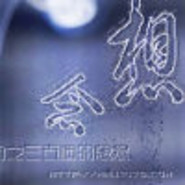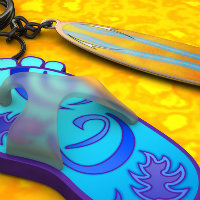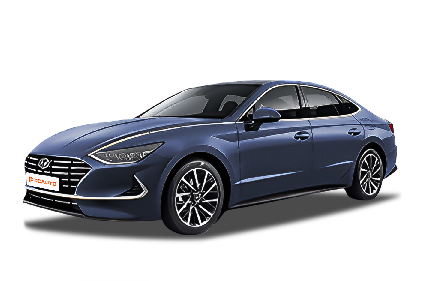Q
Is Sonata a rear-wheel-drive car?
Sonata is not a rear-wheel drive car. Hyundai Sonata is typically a front-wheel drive vehicle, and this layout offers numerous advantages. As for design and production, front-wheel drive is often more cost-effective as it doesn't require a rear driveshaft and a rear differential. It also helps reduce the overall weight of the vehicle, thereby improving fuel efficiency and acceleration performance. Some models of 2024 Sonata are equipped with an all-wheel drive system, which distributes power to all four wheels to enhance traction and stability, performing well especially in challenging driving conditions such as on slippery roads. However, in Malaysia, Sonata doesn't provide a rear-wheel drive version.
Special Disclaimer: This content is published by users and does not represent the views or position of PCauto.
Related Q&A
Q
What is the life expectancy of Hyundai Sonata Hybrid?
The service life of the Hyundai Sonata Hybrid can vary depending on multiple factors. Generally speaking, the battery of the Sonata Hybrid usually lasts about 5 years. As for other components, Hyundai offers a 5 - year or 300,000 - kilometer warranty for the whole vehicle, which reflects the expected durability of the vehicle under normal use conditions. The warranty periods for some core components, such as the power battery assembly, drive motor assembly, motor controller assembly, and vehicle controller assembly, are even longer, sometimes up to 8 years or 150,000 kilometers. Regular maintenance, good driving habits, and usage conditions all play important roles. If properly maintained, serviced on time, and driven carefully, this car has the potential to serve you for over 10 years and cover a mileage of as much as 200,000 kilometers or more.
Q
Which model of Hyundai Sonata is the most expensive ?
Currently, the most expensive model of Hyundai Sonata in Malaysia is the Sonata N-Line version, with an official price of approximately RM218,888 (excluding insurance). This high-performance version is equipped with a 2.5L Turbo GDi four-cylinder engine, capable of outputting 290 horsepower and 422 Nm of torque. Paired with an 8-speed wet dual-clutch transmission and front-wheel drive, it can accelerate from 0 - 100 km/h in just 6.2 seconds.
Compared with the standard Sonata (equipped with a 1.6L Turbo or 2.0L naturally aspirated engine), in addition to its powerful performance, the N-Line is equipped with a sport-tuned suspension, 19-inch wheels, an exclusive N Line exterior kit (including a more aggressive aerodynamic design and quad exhaust pipes), and an all-black interior with red stitching, giving it an overall sporty coupe style.
Although it's price is high, the N-Line version offers a comprehensive configurations, including the advanced Hyundai SmartSense active safety system (such as SCC Smart Cruise Control and FCA Forward Collision Warning), a panoramic sunroof, and a Bose sound system. It's a great choice for consumers who seek both performance and luxury.
Q
How about the speed performance of Hyundai Sonata?
The speed performance varies among different models of the Sonata. The top speed of the 2020 Hyundai Sonata 2.5 Premium can reach 210 km/h, while the top speeds of the 2017 Hyundai Sonata 2.0 Elegance and Hyundai Sonata 2.0 Executive are 200 km/h. These figures reflect the vehicle's potential in terms of power performance. However, in actual driving, it's difficult to reach the vehicle's top speed due to factors such as road conditions, traffic regulations, and driving behavior. For example, the speed limits on ordinary city roads are usually quite low. Although the speed limits on highways are relatively higher, it's not allowed to speed at will. It is recommended that everyone abide by the regulations while driving, reasonably control the speed according to the actual situation, and ensure driving safety.
Q
What's the engine displacement of Hyundai Sonata?
Different models of Sonata have various engine displacements. For example, the 2020 Hyundai Sonata 2.5 Premium is equipped with an engine with a displacement of 2497cc, which can provide ample power to meet the needs of daily driving and some driving scenarios with power requirements. As for the 2017 Hyundai Sonata 2.0 Elegance and Hyundai Sonata 2.0 Executive, their engines have a displacement of 1999cc. Relatively speaking, they may perform better in terms of fuel economy and can also provide stable power output for the vehicle. Engines with different displacements each have their own characteristics. Consumers can choose the model that suits them according to their own driving habits, such as the demand for power and considerations regarding fuel consumption.
Q
What's the service life of Hyundai Sonata's spark plugs?
The service life of the Hyundai Sonata's spark plugs depends on their types. The more affordable nickel alloy spark plugs typically last about 20,000 - 30,000 kilometers. Platinum spark plugs, with better heat and corrosion resistance, can be used for 60,000 - 80,000 kilometers. Iridium spark plugs, known for their high ignition performance, usually have a service life of 80,000 - 100,000 kilometers or even longer.
However, other factors can also have an impact. If the vehicle often drives under harsh conditions such as extreme temperatures, high humidity, and dusty areas, or experiences frequent starting and stopping, the spark plugs may wear out more quickly. Aggressive driving habits like rapid acceleration and hard braking can also increase the engine load and accelerate the aging of the spark plugs. Therefore, although the above are general reference standards, it's very important to regularly check the condition of the spark plugs and follow the vehicle maintenance manual for optimal performance.
Q
Does Hyundai Sonata have spark plug wires?
Yes, Hyundai Sonata is equipped with spark plugs, but it doesn't have the traditional externally exposed spark plug wires. Spark plugs are crucial components in the engine's ignition system, as they generate electric sparks to ignite the air - fuel mixture in the engine's combustion chamber, enabling the engine to operate properly.
With the development of modern automotive technology, many vehicles, including the Hyundai Sonata, have adopted the Distributorless Ignition System (DIS) or the Direct Ignition System (DI). In these systems, the ignition coils are directly installed on top of the spark plugs, providing high - voltage electricity directly to the spark plugs. They no longer rely on the traditional long spark plug wires to transmit high - voltage electricity.
This design reduces electromagnetic interference, improves ignition efficiency and engine performance, and also decreases the likelihood of spark plug wire failures, such as electrical leakage and aging. At the same time, it enhances the overall reliability of the vehicle and its fuel economy.
Q
How many cylinders does Hyundai Sonata have?
Whether it's the regular version or the N-Line version, the Sonata features a 4-cylinder (inline-four) engine layout, which is also a common engine configuration for mainstream mid-size sedans these days. This setup can not only deliver decent power output but also balance it with fuel efficiency. Hyundai has invested lot in developing turbocharged engine technology in recent years. For example, the SmartStream series of engines has optimized combustion efficiency and reduced emissions, enabling the four-cylinder engine to achieve performance comparable to that of a six-cylinder engine. If car owners prefer more potent power, they might need to consider higher-end rear-wheel-drive or all-wheel-drive performance cars. However, for general family use or mild sporty driving needs, the 1.6T or 2.5T four-cylinder engines are good enough for daily driving and highway cruising.
Q
How much does it cost to change Hyundai Sonata's spark plugs ?
The cost of replacing the spark plugs of Hyundai Sonata ranges from approximately RM200 to RM500, depending on the model year, engine type (1.6T or 2.5T), and the brand of spark plugs used (such as NGK, Denso, or original factory parts). A standard 1.6L Turbo engine usually uses iridium or platinum spark plugs, which cost around RM50 to RM150 each. On the other hand, the 2.5L Turbo engine (N - Line version) may require higher - performance spark plugs, which are slightly more expensive (around RM80 to RM200 each).
In addition, labor costs typically range from RM80 to RM150. Dealerships may charge more, providing factory - certified parts. Third - party repair shops offer lower prices, but you need to make sure the technicians perform well in the operation.
The spark plug replacement interval for the Hyundai Sonata is generally between 60,000 and 100,000 kilometers. However, if your vehicle experiences vibrations, has difficulty starting in cold weather, or shows an increase in fuel consumption, you may need to check the spark plugs earlier. It's recommended that owners have technicians inspect the spark plugs during regular maintenance and choose high - quality spark plugs that can withstand high temperatures and resist carbon deposits to ensure optimal engine combustion efficiency.
Q
How many spark plugs does Hyundai Sonata have?
Hyundai Sonata usually has four spark plugs. This is because most Sonata models are equipped with four-cylinder engines, and in gasoline engines, each cylinder is typically assigned one spark plug. Spark plugs play a crucial role in the operation of the engine. They are responsible for igniting the air-fuel mixture in the cylinders, enabling the engine to generate power. For example, the 2020 Hyundai Sonata 2.5 Premium and the 2017 Hyundai Sonata 2.0 Elegance/Executive models are both equipped with four-cylinder engines, and these models all have four spark plugs. Regularly inspecting and timely replacing the spark plugs according to the vehicle's maintenance schedule helps ensure smooth engine operation, good fuel efficiency, and reliable vehicle performance.
Q
How often should I change the spark plugs in my Hyundai Sonata?
The frequency of replacing the spark plugs in your Hyundai Sonata depends on the type of spark plugs installed. Nickel alloy spark plugs are affordable, but they have a short service life. You should consider replacing spark plugs when the vehicle has traveled about 20,000 - 30,000 kilometers. Platinum spark plugs are known for their good heat resistance and corrosion resistance and can be used for 60,000 - 80,000 kilometers. Iridium spark plugs have high ignition performance, and their service life is generally 80,000 - 100,000 kilometers or even longer.
In addition, the operating conditions of the vehicle also affects the service life of spark plugs. If you often drive in harsh environments such as extreme heat, humidity, and dust, or frequently start and stop the vehicle, or have a habit of aggressive driving, the spark plugs may wear out fast, and you may need to replace them early. Regularly refer to the vehicle's owner's manual, as it may provide more specific guidance for your Sonata model.
Latest Q&A
Q
What is the PCD Size of Honda Civic Type R?
The PCD (Pitch Circle Diameter) of the Honda Civic Type R is 5x120. This means its wheels have 5 bolt holes, evenly spaced around a circle with a diameter of 120 millimeters. This specification is similar to many high - performance vehicles and is suitable for pairing with wide wheels and high - performance tires to enhance handling.
For Malaysian car owners, understanding the PCD size is very important. When replacing wheels or upgrading the braking system, it's essential to ensure that the PCD of the new components matches the original factory specifications. Otherwise, adapter flanges may be required, which can affect safety and may not comply with local regulations.
In addition, the center bore diameter of the Civic Type R's wheels is 64.1 millimeters, and the offset (ET) usually ranges from 45 to 55. These figures also influence the selection and installation of wheels.
If you're planning to modify your vehicle, it's advisable to choose certified wheel brands and consult professional technicians to ensure compliance with the requirements of JKR and JPJ while maintaining the vehicle's original performance and safety standards.
Q
What is the Gearbox Type of Honda Civic Type R?
The Honda Civic Type R is equipped with a 6-speed manual transmission. This transmission is specifically tuned for high-performance driving, featuring short-throw shifting and precise clutch feedback. It can fully unleash the power of its 2.0-liter VTEC turbocharged engine, making it an ideal choice for Malaysian drivers who seek driving pleasure.
A manual transmission allows drivers to be more directly involved in power transfer. Moreover, techniques like rev-matching during downshifting can enhance cornering performance. The Type R's transmission comes with a rev-matching function, which reduces jerking during gear changes and is more newbie-friendly.
It's worth noting that the manual transmission still has a loyal following in Malaysia's driving culture, especially among performance car enthusiasts. This is because it offers a purer driving experience. Additionally, the Type R's transmission is designed with daily durability in mind. For example, the synchronizers and gear materials are strengthened to suit the diverse local road conditions.
When compared with other hot hatches in the same class, the Type R's manual setup emphasizes the sense of driving engagement rather than simply chasing shift speed. This distinctive positioning makes it stand out in the Malaysian market.
Q
What Engine is Used in Honda Civic Type R?
The Honda Civic Type R is powered by a 2.0-liter turbocharged four-cylinder gasoline engine with the code K20C1. This engine is well - known for its high performance and reliability. It can deliver a maximum power of 320 horsepower and a peak torque of 400 Nm. Paired with a 6 - speed manual transmission, it offers an extremely fun - to - drive handling experience.
This engine features VTEC (Variable Valve Timing and Lift Electronic Control) technology and is combined with a turbocharging system. This ensures strong torque output at low revs and powerful performance at high revs, making it highly suitable for Malaysia's winding roads and urban driving conditions.
Notably, this engine has undergone special tuning to meet the dual requirements of the Type R model for both track and daily driving, while still maintaining Honda's consistent fuel efficiency.
For Malaysian car enthusiasts, the Civic Type R is not just a high - performance front - wheel - drive hot hatch. It is also an outstanding example of Honda's engineering. Its engine design takes into account both durability and the thrill of driving, making it a perfect choice for local car owners who love to drive.
Q
How Much CC Does Honda Civic Type R Discharge?
As a high-performance hatchback beloved by Malaysian car enthusiasts, the Honda Civic Type R is powered by a 2.0-liter four-cylinder turbocharged gasoline engine with a specific displacement of 1996cc (commonly referred to as 2000cc or 2.0L). This engine can churn out over 300 horsepower in both the FK8 and FL5 generations. Paired with a 6-speed manual transmission, it offers drivers an extremely enjoyable driving experience. For the Malaysian market, the engine displacement of the Civic Type R falls within the range familiar to local consumers. It can not only meet the needs of daily driving but also showcase its high-performance potential on track days.
It's worth noting that although the displacement remains the same, there are upgrades in turbocharging technology, fuel injection systems, and engine tuning for different generations of the Type R. For example, the FL5 version has optimized turbo response and cooling efficiency, which is why it can produce higher horsepower while maintaining the same displacement.
In addition, when Malaysian car enthusiasts choose performance cars, besides paying attention to displacement, they also comprehensively consider the vehicle's suspension tuning, aerodynamic design, and electronic assistance systems. The Civic Type R also performs excellently in these aspects. In particular, its front-wheel-drive chassis tuning is a benchmark in its class and doesn't lose out even when competing with rear-wheel-drive models with larger displacements.
Q
What is the Reslae Value of Honda Civic Type R?
As a high-performance front-wheel-drive sports car, the Honda Civic Type R has shown excellent resale value in the Malaysian used car market. Especially for models in good condition with low mileage, the residual value rate usually remains around 60% to 70% after three years. This is due to the reputation of the Type R series in the sports car field, the scarcity of limited supply, and the recognition of the Honda brand in the local market.
The key factors affecting its second-hand price include the vehicle's maintenance record (it is recommended to keep complete 4S shop repair receipts), whether it has been modified (the original factory state is more preferred), and the body color (classic color schemes such as Championship White hold their value better). At the same time, it should be noted that the FK2 generation before 2017 has less inventory in the right-hand drive market, so it actually has more collection premium space than the subsequent FK8 generation.
For potential buyers, it is recommended to purchase through the certified used car channel on the official website of Honda Malaysia or professional sports car dealers. These channels usually provide additional warranty services. Owners who love track driving need to pay special attention to checking the heat dissipation system and clutch wear. Because the high-rev turbo engine of the Type R places a large load on the cooling system after intense driving, these details will directly affect the valuation when reselling.
View MoreRelated News

Hyundai's Big Return to Malaysia: Top 5 Models Expected
MichaelMay 30, 2025

580,000 km & 87.7% Battery Health: Ioniq 5’s Incredible Durability
MichaelMay 6, 2025

Revolutionizing Hybrids: Hyundai’s New System vs. Toyota's Hybrid System
Kevin WongApr 22, 2025

BYD Sets Global Sales Target of 5.5 Million Units for 2025
RobertMar 26, 2025

Hyundai is to launch an all-solid-state EV battery production line, but who's leading?
MichaelFeb 12, 2025
View More

















Pros
Cons